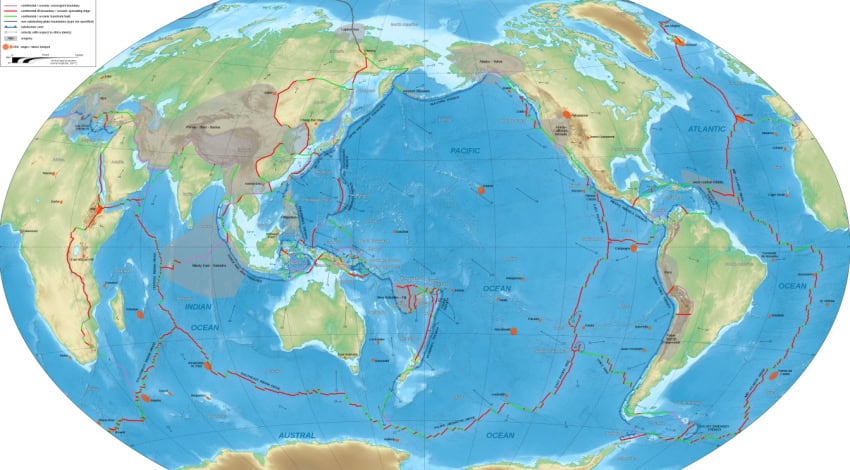In a first, a group of geoscientists have released an animated video giving an easily understandable peek at the uninterrupted movement of the Earth’s tectonic plates over the past billion years.
The seven continents and five oceans are result of evolution that has been occurring for over three billion years. But developing a brief chronology of plates’ movements was a challenging task as existing models provide data of few millions of years.
However, geologists from the University of Sydney after four years of hectic efforts have managed to reconstruct how landmasses and oceans changed in past one billion years.
The study will allow earth scientists to understand how the interior of the Earth convects, chemically mixes and loses heat via seafloor spreading and volcanism in a better way.
The model will help scientists understand how climate has changed, how ocean currents altered and how nutrients fluxed from the deep Earth to stimulate biological evolution, Phys.org said in a report.
The video reveals a planet in constant movement as land masses move around the Earth’s surface, for instance showing that Antarctica was once at the equator.
The 40-seoncd video is based on new research published in the March 2021 edition of Earth-Science Reviews.
Co-author and academic leader of the University of Sydney EarthByte geosciences group, Professor Dietmar Müller, said: “Our team has created an entirely new model of Earth evolution over the last billion years.
“Our planet is unique in the way that it hosts life. But this is only possible because geological processes, like plate tectonics, provide a planetary life-support system.”
Lead author and creator of the video Dr Andrew Merdith began work on the project while a PhD student with Professor Müller in the School of Geosciences at the University of Sydney. He is now based at the University of Lyon in France.
Co-author, Dr Michael Tetley told Euronews: “For the first time a complete model of tectonics has been built, including all the boundaries”
“On a human timescale, things move in centimetres per year, but as we can see from the animation, the continents have been everywhere in time. A place like Antarctica that we see as a cold, icy inhospitable place today, actually was once quite a nice holiday destination at the equator.”
Co-author Dr Sabin Zahirovic said: “Planet Earth is incredibly dynamic, with the surface composed of ‘plates’ that constantly jostle each other in a way unique among the known rocky planets. These plates move at the speed fingernails grow, but when a billion years is condensed into 40 seconds a mesmerising dance is revealed.
“Oceans open and close, continents disperse and periodically recombine to form immense supercontinents.”
Professor Müller said: “Simply put, this complete model will help explain how our home, Planet Earth, became habitable for complex creatures. Life on Earth would not exist without plate tectonics. With this new model, we are closer to understanding how this beautiful blue planet became our cradle.”













